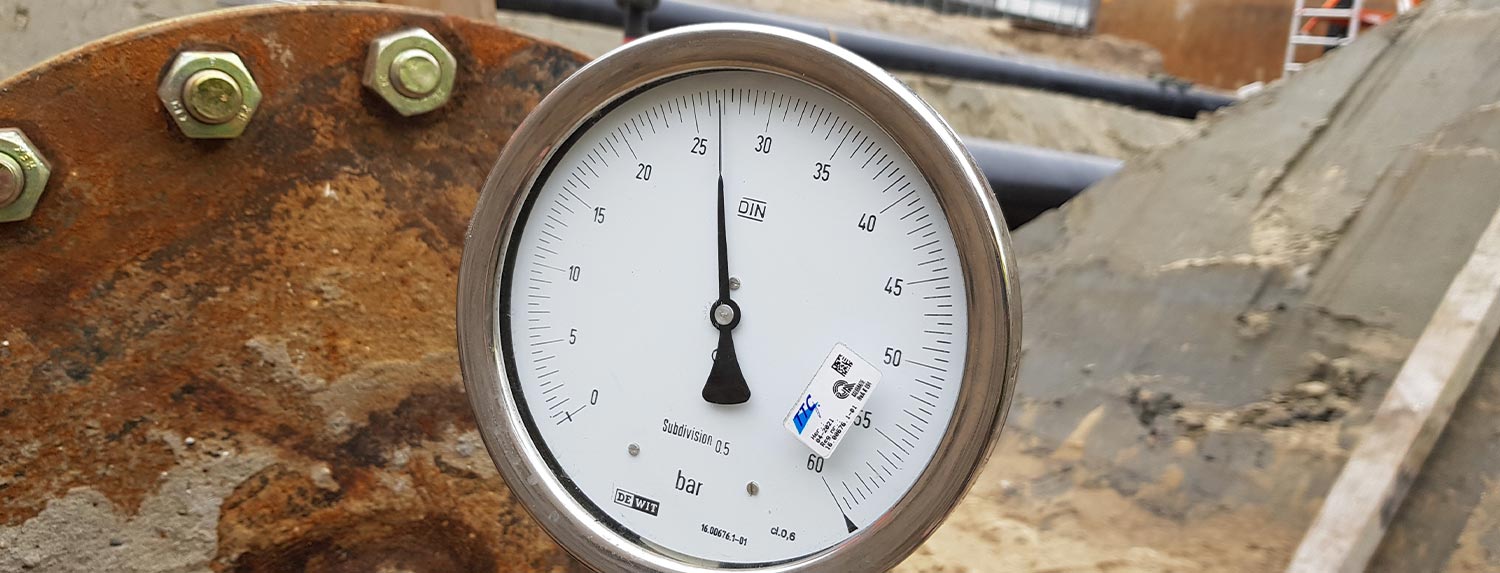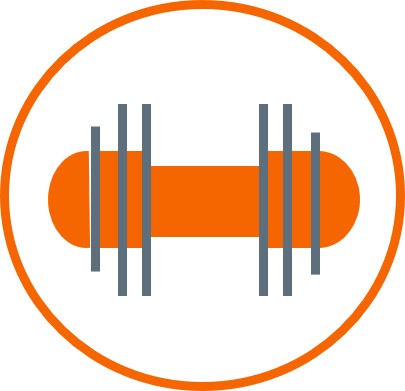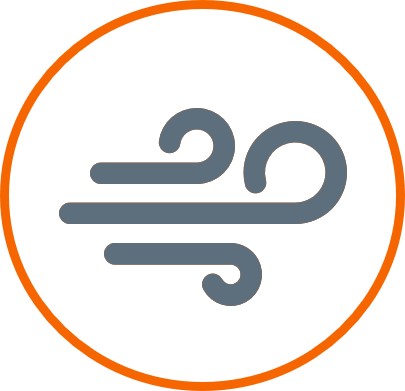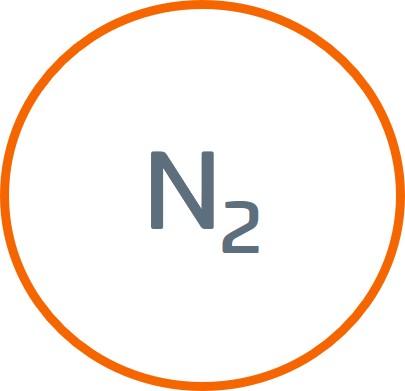– Strength test
– Tightness test
– Hydrostatic testing
– Pneumatic testing
– Alternatives

The (high) pressure testing of pipelines is an important part of checking whether a constructed pipeline mechanically meets the requirements set by the legislator and the customer. During the production process of the pipeline and during the welding process in the field, possible production errors can arise. Depending on the product that passes through the pipeline, this can have major consequences for the environment. There are various ways of checking the quality of the work and demonstrate that the pipeline is sufficiently safe.
In the case of non-destructive testing (NDT), the pipeline will be examined, with analysis techniques that will not damage or change the pipeline. Techniques that are used are: visual, penetrant, ultrasonic, magnetic and eddy current research. TECCURO is not carrying out these surveys, but can guide you in this process.
“PERFORMING UNDER PRESSURE”
After the pipeline has been welded and examined using a non-destructive method, a strength and tightness test has to be performed.
Strength test
During a strength test (also called pressure test) TECCURO will check whether the pipe can withstand the pressure for which it is designed. TECCURO will pressurize the pipeline in a controlled manner with a liquid or a gas. Depending on the requirements set by the legislator or client, the test pressures are between 1.25 and 1.5x the design pressure. In some circumstances it is required to apply a pressure of 95% of the material yield strength.
Tightness test
The tightness test follows after the strength test. The tightness test is performed to check whether the pipeline is free of leaks (in accordance to the applicable standard). The same medium that was also used during the strength test, the pipe will be pressurized by TECCURO for a predetermined period. This pressure is lower than the strength test and will be held for a longer time. The test duration of an above ground and underground pipeline are different. The pipeline is free of leaks if the pressure in relation to the temperature remains the same during the tightness test period.
Hydrostatic testing
Most pipelines are pressurized with water. In these cases we speak of a hydrostatic pressure test. The water that is used can be tap water, demineralized (Demi) water, or obtained from the surface of a nearby body of water. Depending on where the water comes from, TECCURO will first filter the water to prevent contamination and additional cleaning afterwards.
Advantages of a hydrostatic test:
- Testing with water is safer than testing with a gas;
- No environmental incidents occur when the pipeline collapses;
- Water has little impact on the pipeline material;
- Water is relatively easy to supply and remove.
Limitation of a hydrostatic test:
- Water residues can have an impact on the process (Hydrate formation);
- Additional work is required to dewater & dry the pipeline;
- Testing in winter conditions with water is not possible unless additives are used.
Pneumatic testing
Sometimes the limitations of a hydrostatic test outweigh the benefits. In these cases there is an option to consider to test the pipeline with a gas (air or nitrogen). Due to the stored energy, a pneumatic test has a higher risk and the safety distance during the test will be increased. The advantage, however, is that the pipe or system can be dried more easily (brought to dew point).
Alternatives
In some aboveground systems that are generally pneumatically tested, TECCURO has the option to apply the following methods: Soap testing, sound testing and nitrogen / helium testing. All of these methods have their own benefits depending on various circumstances and can be discussed to see which would be best suited for your specific project needs.










